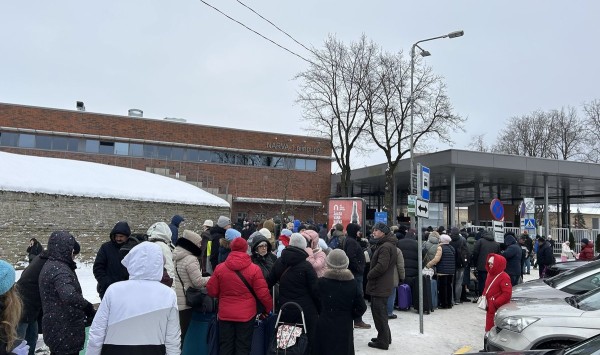The Soviet Union and Nazi Germany: a suitable marriage of the like-minded (2)
Archived Articles | 22 Apr 2005 | Estonian Central Council in CanadaEWR
The Soviet Union and Nazi Germany through their infamous August 23, 1939 “Molotov Ribbentrop Pact” (MRP) agreed secretly to take over Finland, Estonia, Latvia, Lithuania, Poland and other strategic regions. They are equally to blame for the devastation of World War II.
Moscow today touts the leading role of the USSR in its May 9th celebrations of the 60th anniversary of the victory over Fascism. It self-righteously dodges the issue of Moscow’s enthusiastic collusion with Berlin in instigating events that triggered the Second World War. It is just too humiliating to admit.
Toomas Trei, in previous issues of Estonian Life gave a thorough analysis of the impact of the MRP on Estonia and Poland, amongst others. We can also remind ourselves of the total absence of any moral or ethical consideration in USSR’s pact with the Nazis. It’s rather fitting that these two brutal regimes could find each other as mutually useful. Let’s reflect on the following, all taking place before the MRP was signed in 1939:
Six years prior to the MRP in 1933 Hitler had already established his first concentration camps – at Oranienburg and Dachau. The USSR’s Gulag was already in place. The Ukrainian famine already instigated by Moscow eventually killed more people (8,000,000 victims) than Hitler’s extermination program.
In 1933 Hitler launched an official nationwide boycott of Jewish businesses and professionals. Jews were expelled from the civil service. In all 400 anti-Jewish laws were enforced.
In 1935 the Nuremberg laws were legislated: Jews were denied civic equality and officially declared an inferior race and segregated from the rest of the population 30,000 Russians, returning to the USSR from China in 1936 were almost all murdered by the regime.
In 1937 Buchenwald was established. The Soviet regime murdered 20,000 in front of open pits at Butovo execution grounds. Almost all the Russian communists returning to the USSR to help build a socialist state were killed. The Great Purges (Great Terror) began in the USSR with millions of victims.
In 1938 Germany annexed Austria; with the permission of others it annexed part of Czechoslovakia; deported Jews from Vienna, Hamburg and Prague to Poland; and encouraged the Kristallnacht progroms. Thousands were exterminated in in Vorkuta,USSR. Thirty seven members of a deaf-mute society in Moscow were killed.
With the Nazis targeting in general non-Aryans, the handicapped, gays etc., The Soviet Union liquidated Muslims such as Ingush, Cherkass, Dhagestanis, Tatars, Chechen and others – Germans, Poles, Greeks, Afgans, Koreans, Chinese, Finns, Latvians, Estonians, Lithuanians, even handicapped as mentioned. Moscow and Berlin made obviously compatible bedfellows. It is said that the USSR’s victims total 35,000 September 11-s. While a comparison with Hitler for some is offensive, the Soviet Union probably killed eight times as many people than Hitler’s concentration camps. In some respects, Hitler was definitely the junior partner in the MRP.
Moscow obviously does not want to be confronted with the squalid reality of the MRP, especially prior to the Moscow summit. The terror of the Soviet State fitted well with the atrocities of the Nazis. Stalin (read the USSR) was able to mask the crimes of the Soviet state, and indeed to widen its appeal to many in the West, by assuming the mantle of the champion of anti-fascism.
The Estonian Central Council in Canada, in its May 5 press conference on Parliament Hill continues to expose this myth. Write to your Member of Parliament about this.
Viimased kommentaarid
Kommentaarid on kirjutatud EWR lugejate poolt. Nende sisu ei pruugi ühtida EWR toimetuse seisukohtadega.
you are mostly a comdeian
The Union of Soviet Socialist Republics had to protect itself against the aggressiveness of Latvia, Lithuania and Estonia. A non-aggression pact with Germany was the only way for the USSR to guarantee its own security.
Archived Articles
TRENDING


















